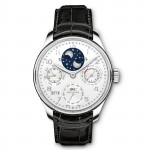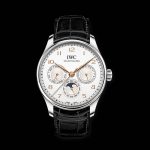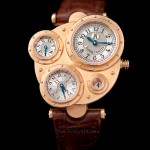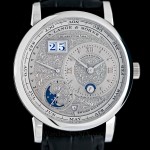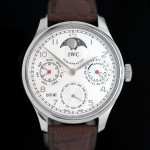Up Close with the IWC Portugieser Perpetual Calendar (with Original Photos & Price)
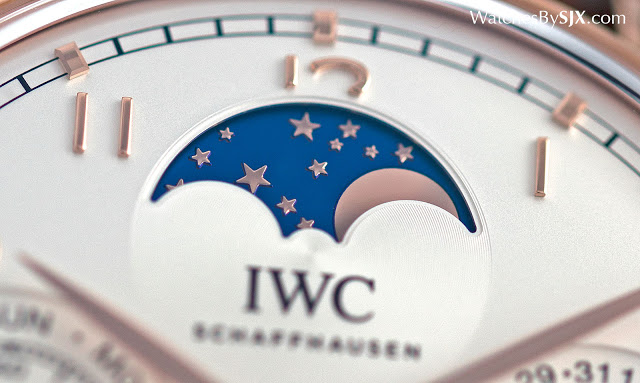
Arguably IWC’s signature complication, the ingenious perpetual calendar with four digit year display is part of the face-lifted and streamlined Portugieser collection, powered by the new calibre 52000 seven day automatic movement.

Not the most complicated or expensive, the perpetual calendar is nonetheless the flagship of IWC‘s Portugieser collection because it utilises the famous perpetual calendar invented by Kurt Klaus. Concise and clever, the perpetual calendar mechanism is set entirely via the crown, needing neither buttons nor pushers. And it has a four digit year display, useless in practice but a concrete reassurance of the longevity of this expensive mechanical watch. Unlike past generations of Portugieser Perpetual Calendar which were confusing because of the varying sizes and styles available, the new perpetual calendar line-up is easy to digest. There are four models available, all with the same 44.2mm case available in red or white gold. And the dial designs have also been unified, with all of the models featuring a railway minute track.
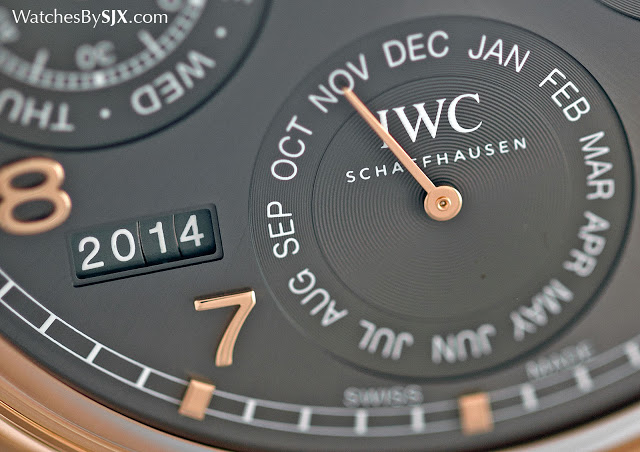
The only options are dial colours and the moon phase – either the traditional single moon display or the two-hemisphere, double moon phase. Regardless of the type of moon phase, a liberal sprinkling of stars has been added to the moon display. It’s a subtle detail but makes the dial a little bit less staid.
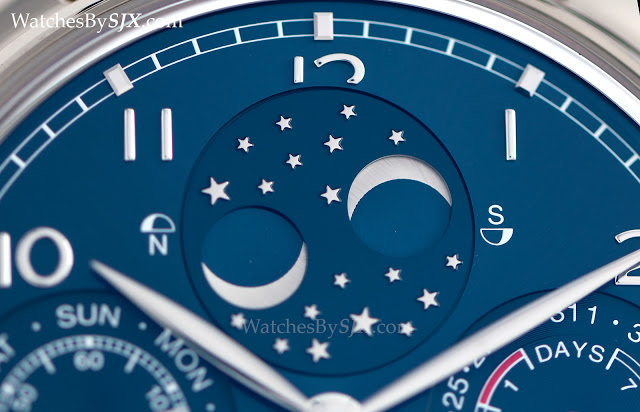 |
| The double moon display |
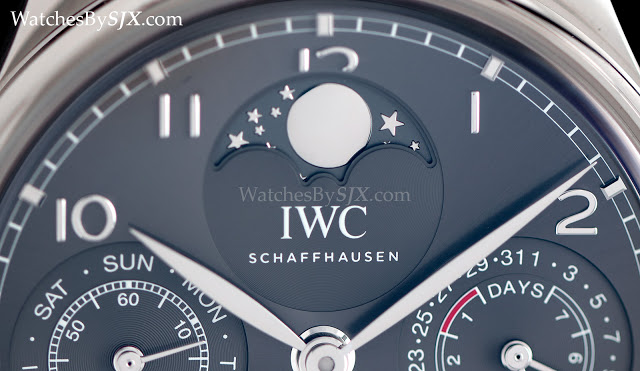 |
| And the more traditional single moon |
While the offerings have been streamlined, the key feature of the watch remains the same – the clever perpetual calendar mechanism that’s now 30 years old. When it first came to market in 1985, the IWC Da Vinci was the first perpetual calendar wristwatch with a four digit year display.
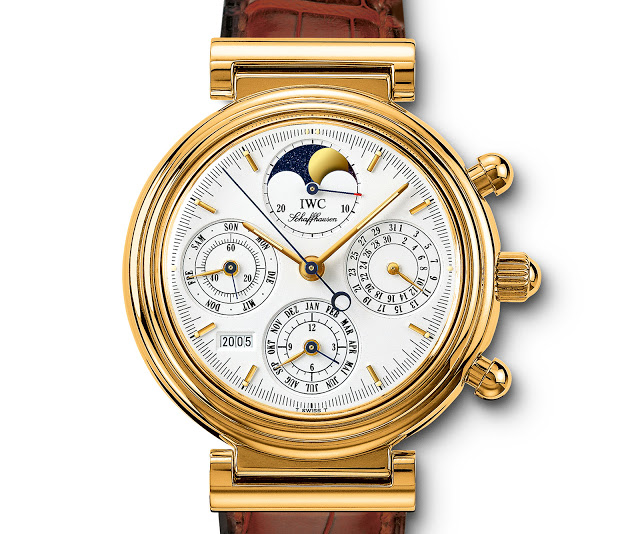 |
| The Da Vinci of 1985 |
Originally built on top of the Valjoux 7750 chronograph movement (the Da Vinci was a chronograph with perpetual calendar), the perpetual calendar mechanism is now synonymous with IWC (though its sister brand Jaeger-LeCoultre has also adopted the four digit year display). Like many of the other complications IWC developed at the time, it was devised by Kurt Klaus, whose practical yet ingenious approach to movements is evident in his work. Though the perpetual calendar mechanism has been refined and improved over the years, it is still fundamentally the mechanism invented in 1985.
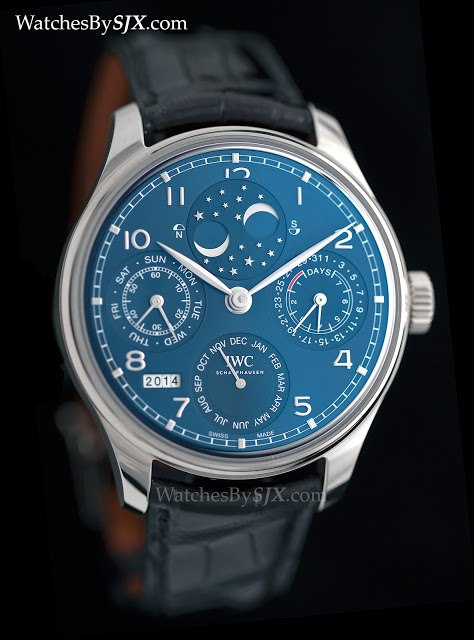 |
| The double moon phase model is available in white or red gold… |
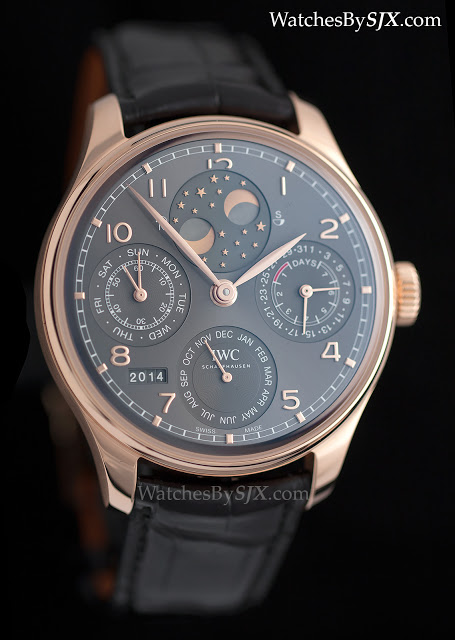 |
| With a blue or grey dial |
Like most of the revamped Portugieser watches unveiled at SIHH 2015, the perpetual calendar relies on the newly developed calibre 52000 movement. The calibre 52000 is functionally identical to the calibre 5000 it replaces, but is a more efficient construction.
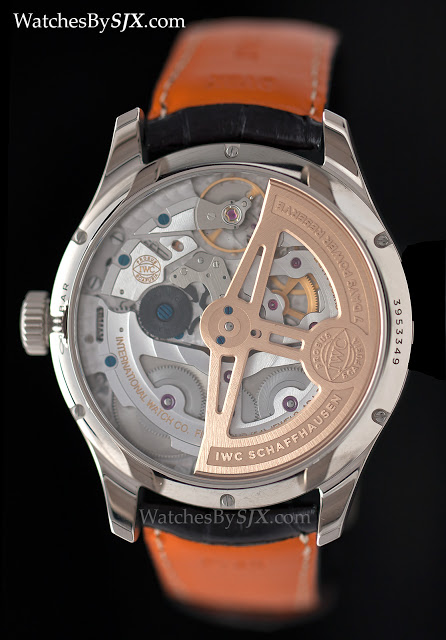
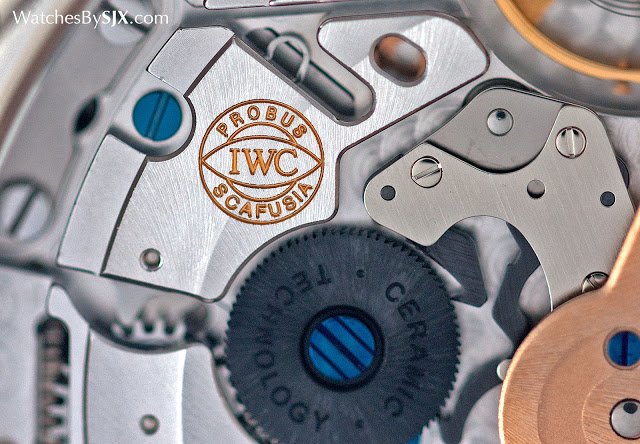 |
| Probus Scafusia is Latin and translates as “good quality from Schaffhausen”, the hometown of IWC |
It has two mainsprings instead of one, which deliver more even power throughout its seven day power reserve. And it has wear-resistant ceramic components in the Pellaton winding mechanism. A more detailed explanation of the movement can be found in our story on the Portugieser Automatic 7-Days.
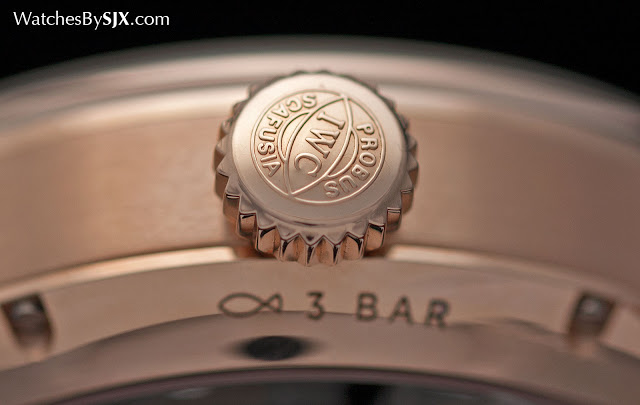 |
| The crown is also topped with the IWC seal |
But because all four versions of the Portugieser Perpetual Calendar have gold cases, the movements used are a little bit more decorated. Instead of a rhodium plated brass, the rotor is made of 18k red gold. And the most screws in the movement are heat blued, rather than just polished steel.
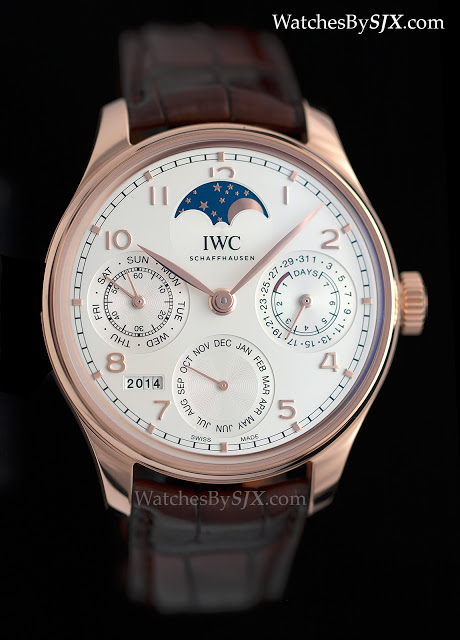 |
| The single moon phase available in red gold with a silver dial |
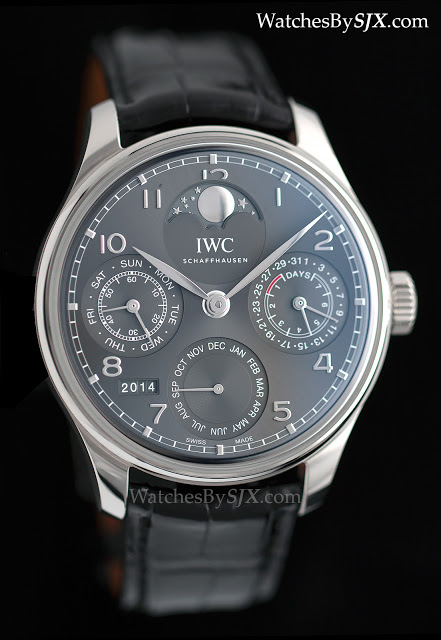 |
| Or white gold and grey |
Though the case of the new perpetual calendar retains the classic form of the Portugieser, the sapphire crystal is now domed, an upgrade over the flat crystal of the earlier generation. More expensive to produce than its flat counterpart, the domed crystal also approximates the look of a vintage Portugieser watch with its domed Plexiglas crystal. This domed crystal is also found on the Portugieser Annual Calendar.
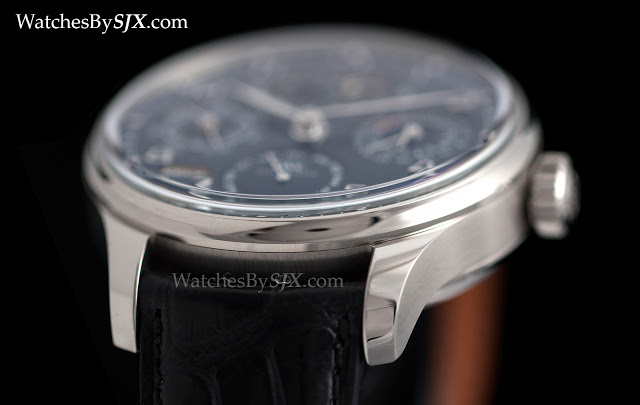
While the Portugieser Perpetual Calendar is by no means a cheap watch, it is relatively well priced relative to the competition. Costing about half what the same complication would cost from Patek Philippe or Vacheron Constantin, the Portugieser Perpetual Calendar falls short in terms of movement decoration, but offers one of the most notable perpetual calendar mechanisms, combined with a solidly built base movement. Retail prices in U.S. and Singapore dollars are as follows: Portugieser Perpetual Calendar ref. IW5034 double moon phase red gold US$39,800 or S$60,100 Portugieser Perpetual Calendar ref. IW5034 double moon phase white gold US$42,900 or S$63,000 Portugieser Perpetual Calendar ref. IW5033 single moon phase red gold US$38,800 or S$58,700 Portugieser Perpetual Calendar ref. IW5033 single moon phase white gold US$41,900 or S$61,600
Back to top.
